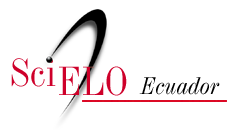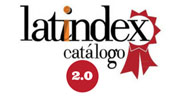Relación entre la composición química inorgánica del agua, la precipitación y la evaporación en la cuenca de Río Grande, Chone, Ecuador
DOI:
https://doi.org/10.29019/enfoqueute.v6n1.52Palabras clave:
procesos químicos, mineralización, bicarbonatos, calcioResumen
(Recibido: 2015/01/19 - Aceptado: 2015/03/25)
En la cuenca de Río Grande se construye la presa Propósito Múltiple Chone (PMCH) con una inversión aproximada de 66 millones de dólares que irrigará más de 7000 ha. Por las marcadas diferencias en las precipitaciones, éstas podrían perjudicar la calidad de las aguas, por consiguiente, el objetivo de este trabajo fue establecer la relación existente entre los iones y su ubicación en el gráfico: relación de los iones y mecanismos de procesos químicos de las aguas estableciendo su comportamiento y tendencia. El trabajo fue una investigación no experimental, transversal y descriptiva. Se tomaron 111 muestras simples en el conjunto de cauces que forman la cuenca de Río Grande, en los años 2013 y 2014, durante las épocas de estiaje y lluvia. Los parámetros medidos en las muestras fueron aniones y cationes. Los procesos que controlan la química del agua superficial de la zona de estudio en época de lluvia poseen una predisposición a la mineralización en equilibrio con las rocas, sin embargo, en el periodo de estiaje se observó la predisposición de las aguas hacia la zona donde predomina la evaporación con respecto a la precipitación, aumentando la composición química inorgánica de las aguas que en el tiempo podría ampliarse.
Descargas
Publicado
Número
Sección
Licencia
Los autores retienen todos sus derechos (© copyright).
- Los autores retienen sus derechos de marca y patente, y también sobre cualquier proceso o procedimiento descrito en el artículo.
- Los autores retienen el derecho de compartir, copiar, distribuir, ejecutar y comunicar públicamente el artículo publicado en Enfoque UTE (por ejemplo, colocarlo en un repositorio institucional o publicarlo en un libro), siempre que se dé el reconocimiento de su publicación inicial en la revista Enfoque UTE.
- Los autores retienen el derecho a hacer una posterior publicación de su trabajo, de utilizar el artículo o cualquier parte de aquel (por ejemplo: una compilación de sus trabajos, notas para conferencias, tesis, o para un libro), siempre que indiquen la fuente de publicación (autores del trabajo, revista, volumen, número y fecha).
























